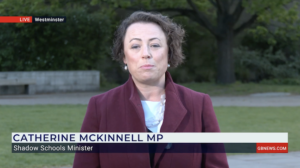Careless recycling leading to MORE rubbish in landfill

New research from sustainable packaging leader DS Smith has showed that the average Brit gets through 242 plastic bottles, 109 coffee cups and 209 crisp packets each year.
Brits will also bin 378 snack wrappers, 251 cans, and 374 cardboard boxes or paper packets annually. The study also found it’s not just food and drink packaging piling up, as the UK will collectively throw away 468 million spray bottles from cleaning products and 520 million shampoo bottles every year.
The figures also show that 83% of Brits are not clear which of these types of items can and can’t be recycled. Indeed, the average Brit admits to throwing 30% of their recyclable material into general waste, potentially costing the economy more than £95m each year.
This lack of clarity hasn’t gone unnoticed and this week DS Smith announced its Circular Design Principles to help companies design reuse and recyclability into their packaging so that it becomes easier for customers to become part of a circular economy. The principles have been developed in collaboration with the Ellen MacArthur Foundation, a global thought leader on the circular economy.
Risk-averse recycling
The figures show that when unsure about whether a package can be recycled, over four in ten (44%) Brits say they prefer to ‘play it safe’ and place their packets in the general waste bin.
A total of 56% of Brits admitted that they had put things in general waste they thought could be recycled, with 32% of these saying they did so because the label was unclear.
Experts at leading sustainability packaging brand DS Smith have labelled these people ‘risk-averse recyclers’ and highlighted that their desire to not contaminate recycling waste could mean that 2.6m tonnes of recyclable materials could be going to landfill each year.
Stefano Rossi, Packaging CEO, said, “There is an undeniable desire from the public to help with the climate crisis, but a lot of packaging is still not recyclable, and people are confused about what packaging goes into which bin.
“We have launched our Circular Design Principles to help companies evolve to meet the needs of the public. By introducing this set of principles, we can design for recyclability, design out waste and pollution, create packaging suited to a circular economy and make it easier to provide labelling to help consumers recycle more.”
Wish-cyclers
At the other end of the spectrum are ‘wish-cyclers’: the 30% of people who, faced with uncertainty over whether their boxes, bottles and containers can be recycled, put them in the recycling bin and hope for the best.
More than half (51%) admitted to putting things in the recycling that can’t be recycled, and among those, 44% said it was because they didn’t know where else it should go, and 21% because they were hopeful the packaging would get a second chance and recyclers would put it in the right bin.
More than a third (37%) said that they’ve even put something in the recycling bin that still has food and drink on it – which will contaminate the recycling.
Some of this could be attributed to laziness: 16% have put general waste into the recycling because it was easier and more than a quarter (27%) have done so because they weren’t paying attention. What’s more, around a fifth (19%) Brits confessed that they rarely or never check labels before putting an item in the recycling.
A lack of clarity
However, what’s clear is both wish-cyclers and risk-averse recyclers are suffering from the same core problems – unclear recycling rules and unclear recycling information on packaging.
More than half of all those surveyed said the recycling information on packaging is unclear (56%) and almost a third (32%) said there was no clear recycling label to follow. Further to this, a fifth (21%) reported that they are uncertain about the recycling rules where they live with a similar number (23%) admitting they don’t know which recycling bins to put rubbish in in the first place.
In addition to making recycling clearer, DS Smith’s Circular Design Principles have been developed to design out waste and pollution, keep products and materials in use, and regenerate natural systems. A circular economy model benefits the environment and can drive growth for the packaging industry.




